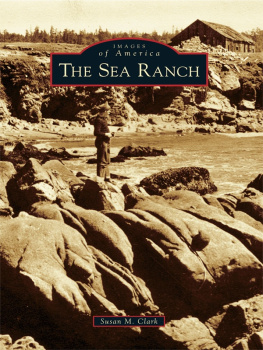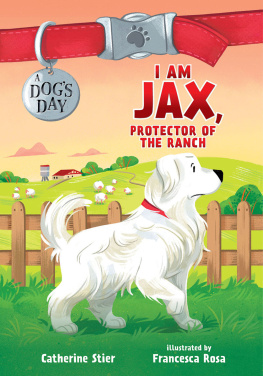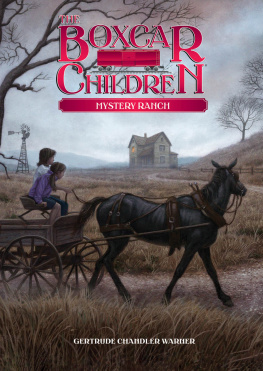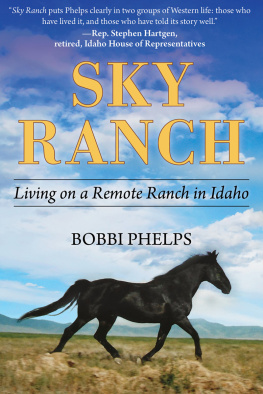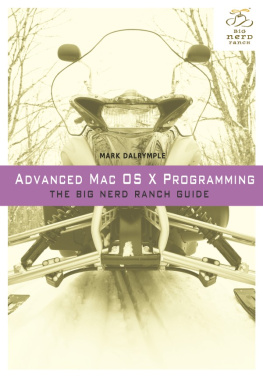Cordia Duke - 6,000 Miles of Fence
Here you can read online Cordia Duke - 6,000 Miles of Fence full text of the book (entire story) in english for free. Download pdf and epub, get meaning, cover and reviews about this ebook. year: 2005, publisher: University of Texas Press, genre: Non-fiction. Description of the work, (preface) as well as reviews are available. Best literature library LitArk.com created for fans of good reading and offers a wide selection of genres:
Romance novel
Science fiction
Adventure
Detective
Science
History
Home and family
Prose
Art
Politics
Computer
Non-fiction
Religion
Business
Children
Humor
Choose a favorite category and find really read worthwhile books. Enjoy immersion in the world of imagination, feel the emotions of the characters or learn something new for yourself, make an fascinating discovery.

- Book:6,000 Miles of Fence
- Author:
- Publisher:University of Texas Press
- Genre:
- Year:2005
- Rating:3 / 5
- Favourites:Add to favourites
- Your mark:
- 60
- 1
- 2
- 3
- 4
- 5
6,000 Miles of Fence: summary, description and annotation
We offer to read an annotation, description, summary or preface (depends on what the author of the book "6,000 Miles of Fence" wrote himself). If you haven't found the necessary information about the book — write in the comments, we will try to find it.
This book of reminiscences of old XIT Ranch cowmen puts on record the everyday life of the individuals who made the ranch run.
6,000 Miles of Fence — read online for free the complete book (whole text) full work
Below is the text of the book, divided by pages. System saving the place of the last page read, allows you to conveniently read the book "6,000 Miles of Fence" online for free, without having to search again every time where you left off. Put a bookmark, and you can go to the page where you finished reading at any time.
Font size:
Interval:
Bookmark:
Six Thousand Miles of Fence
NUMBER ONE
The M. K. Brown Range Life Series
Six Thousand Miles of Fence IS THE FIRST BOOK TO BE PUBLISHED BY THE UNIVERSITY OF TEXAS PRESS IN THE SERIES WHICH HAS BEEN ESTABLISHED THROUGH THE GENEROSITY OF MONTAGU K. BROWN OF PAMPA, TEXAS. HIMSELF A PANHANDLE PIONEER, MR. BROWN HAS LONG BEEN INTERESTED IN PRESERVING THE RECORD OF HIS REGION AND OF THE MEN WHO MADE IT.

R. L. Bob Duke, the last XIT general manager to run cattle. The time is 1912.
Life on the XIT Ranch of Texas
BY CORDIA SLOAN DUKE
and JOE B. FRANTZ

TO R. L. (BOB) DUKE
and the men and women who made the
largest fenced ranch in the world,
the XIT.
International Standard Book Number 0-292-77564-4
Library of Congress Catalog Card Number 61-10042
Copyright 1961 by Cordia Sloan Duke
All rights reserved
Printed in the United States of America
Eighth paperback printing, 2005
Requests for permission to reproduce material from this work
should be sent to Permissions, University of Texas Press, Box
7819, Austin, Texas 78713-7819
www.utexas.edu/utpress/about/bpermission.html
 The paper used in this publication meets the minimum
The paper used in this publication meets the minimum
requirements of American National Standard for Information
SciencesPermanence of Paper for Printed Library Materials,
ANSI Z39.48-1984.
In 1907 Cordelia Jane Sloan married Robert L. Duke, a ranch hand who had risen to division manager for the 3,000,000-acre XIT Ranch of Texas, the worlds largest. An eager observer, she early began the habit of keeping a diary. As time passed, she had the foresight to realize that the sweaty, tired, hungry cowhands with whom she visited were part of a unique phase of American life. What she particularly perceived was that these men would be glamorized and the memory of their work distorted by writers who could sense a pay vein when they saw one.
Besides keeping her own diary, she encouraged these cowhandssome barely literate, some with a fine sense of communication, but nearly all of them men who could go months or even years without taking pencil in handto jot down descriptions of what they did as cowboys. This way, Eventually almost eighty cowhandsor, in some instances, their wives or sistersresponded.
As the decades rolled by, Mrs. Duke added to the roster of reminiscences. Occasionally she did a short piece from these resources for The Cattleman or for some newspaper. But by and large she merely waited until about a year ago, when she suggested to the University of Texas Press and me the idea of making the sketches into a book. We were both enthusiastic. Even if we had been uninterested, she probably would have charmed us into wanting to work with her. But we had already made up our minds before we fell under her spell.
What follows is in no sense a sociological tract or a simple job description. Nor does its purport to be a history of the XITJ. Evetts Haley and Lewis Nordyke have presented that story far too well to leave need for additional versions. Instead, Mrs. Duke and I wish to let the XIT cowboy tell the story of his workaday world as he saw it, stripped of the false heroics imposed by countless Hollywood and TV scenarios and many more thousands of Western storytellers, who may operate out of Liverpool, Los Angeles, or any other Western point in between.
The authors of these sketches shared one common experieneesomewhere in their careers they had been associated with the XIT. Before or after they worked for the XIT, they worked for other outfitsor, in some instances, for them-selves. We have made no attempt to confine their story to the one big ranch, but to draw from their experience where-ever it was enjoyed, or endured.
In the main our function has been to moderate, to announce the next speaker, and then to get out of the way. At times we have debated whether the editing should be tighter, but when a cowpuncher was wound up and making good sound, we were disposed to let him go on cooling his coffee,to use a favorite cowboy expressioneven though what he was saying might stray a bit off the narrative range.
Along the trail we had some assistance. From what I can gather, everyone in the Panhandle would have liked to help Mrs. Duke, but those to whom she, and I too, owe an especial debt are those XIT men and their feminine partners, some a long way over the Divide, who took the time to remember.
And from my end of the corral I should like to thank particularly Mrs. Dukes daughter, Mrs. A. B. Warrenburg of Houston; Dr. Llerena B. Friend, Texas History Center Librarian, the University of Texas; Mrs. Tita Garner of El Paso; and Miss Suzanne Kain and Mrs. Gretchen Blackmon of Austin, all of whom assisted in some necessary way. I am grateful also to the Research Institute of the University of Texas Graduate School for its material aid. All photographs which do not carry credit lines are from Mrs. Dukes personai collection. Paul T. Armitstead of Austin drew the maps. And finally I want to thank Miss Colleen T. Kain, who acted as a sort of subeditor, not only wielding an intelligent pair of scissors but assisting also in selection and organization of material, so that the cowboys did not trip all over their spurs as they sauntered through my mind and vision.
J. B. F.
And then there is the case of Andy Jones, an XIT hand who told his daughter some of his ranching experiences. When she used part of this material in a story for her high school class the teacher commented that either Mr. Jones or the girl had a vivid imagination. From that time forward Andy Jones had nothing to say.
Late in the afternoon I dismounted from my bus in the high-plains town of Dalhart, Texas, and crossed over to the appropriately named XIT Motel. As I signed the register under Firm Name my host, reading upside down, said, University of Texaswhat department?
History, I said.
Then you will want to see Mrs. Duke while youre here.
Later that night while I was strolling around town, tasting the wind as it kicked up little eddies, a former student hailed me. After the first amenities had been exchanged, he said, You know, you should see Mrs. Duke while youre here.
Before I went to Dalhart I had corresponded with Mrs. Duke and had talked with her on the telephone. Somehow I had pictured a gaunt, raw-boned cowmans wife, face leathery and seamed by the sun, voice rough and language rougher. What I found the next morning was a genteel little woman, the perfect portrait of a sentimental grandmother, dressed in taste, with a wide-ranging interest and a feeling for the cultural side of life that contrasted strikingly with her story of having homesteaded as a barely grown girl, of having threatened an intruder with a gun, or of having fought dust and blizzard a hundred miles from anything that in the usual sense could be called civilization. I found too a woman of eighty who was attending writers conferences, submitting her own efforts to professionals for criticism, and in general seeking to learn to write, all with as much hope and indefatigability as if she had been a lass of twenty with a half-century ahead of her.
I learned that Mrs. Duke had been writing for nearly fifty years. As a young ranch wife she had begun a diary. Busy as any mother of three with a herd of cowhands to look after, she had carried a notebook and pencil in her apron pocket and had written at every opportunity. When nothing happened to add to the diary, she would reach back to jot down recollections of her childhood. I got the habit of writing, and I couldnt stop, she said.
Next pageFont size:
Interval:
Bookmark:
Similar books «6,000 Miles of Fence»
Look at similar books to 6,000 Miles of Fence. We have selected literature similar in name and meaning in the hope of providing readers with more options to find new, interesting, not yet read works.
Discussion, reviews of the book 6,000 Miles of Fence and just readers' own opinions. Leave your comments, write what you think about the work, its meaning or the main characters. Specify what exactly you liked and what you didn't like, and why you think so.

